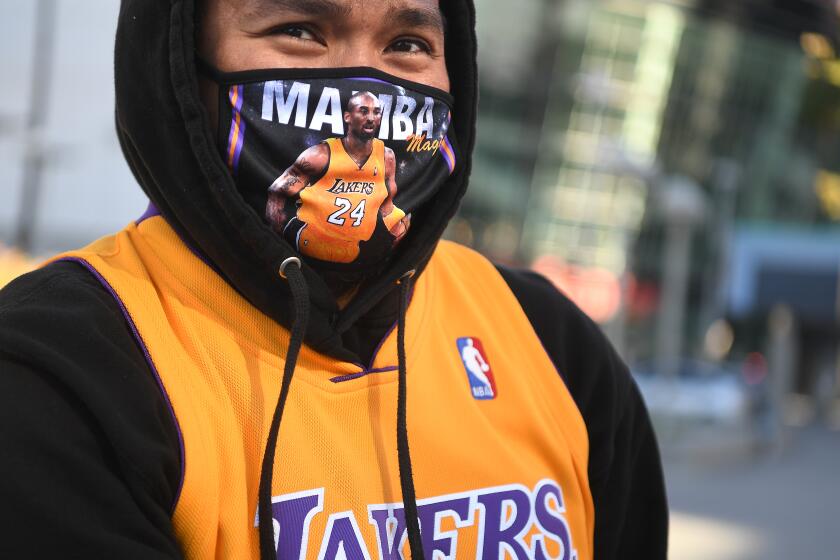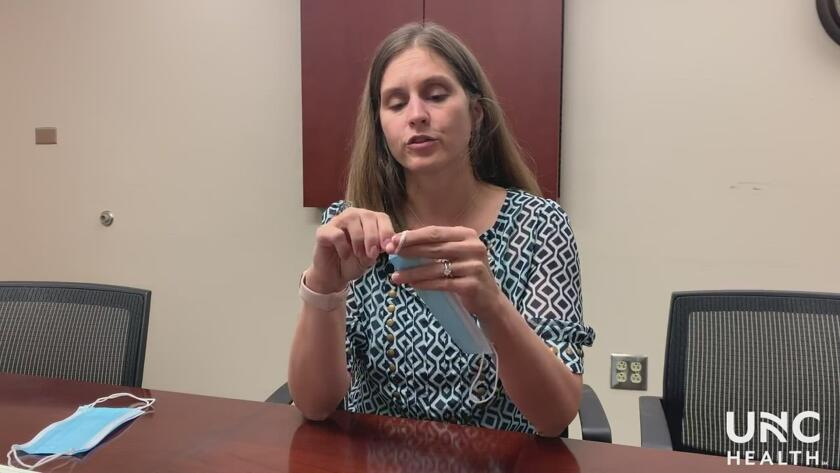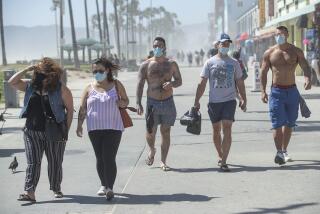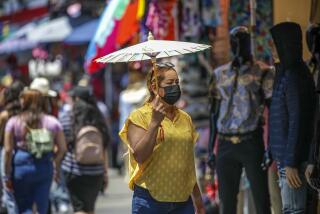Seven ways to make your COVID-19 mask more effective with a better fit
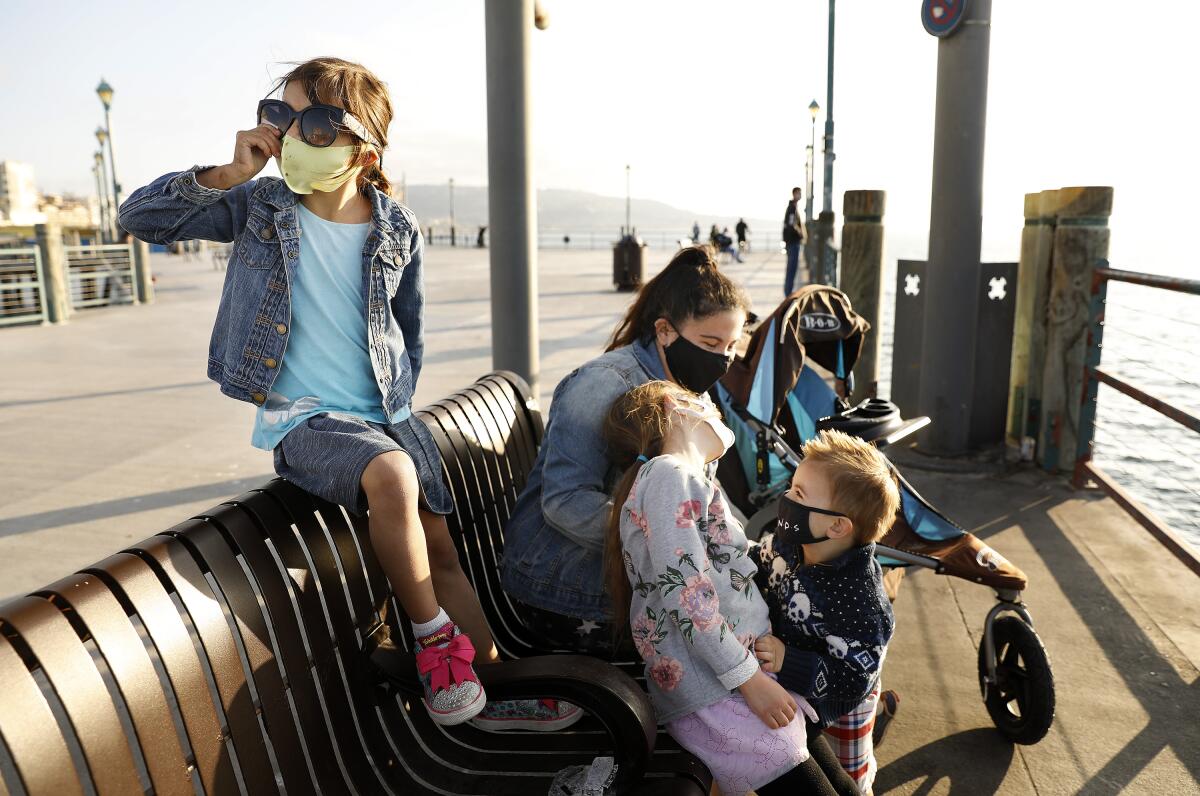
- Share via
The U.S. Centers for Disease Control and Prevention this week offered new tips on how to make your mask more effective to protect against the spread of the coronavirus.
The key, scientists said in a report Wednesday, is to make the masks fit better.
Using a loose medical procedure mask or only a cloth mask blocked only about 40% of particles from a simulated cough in tests. But tighter-fitting masks have the potential to reduce exposure to potentially infectious particles by more than 90%, the CDC said.
“Wearing any type of mask performs significantly better than not wearing a mask. And well-fitting masks provided the greatest performance,” said Dr. Rochelle Walensky, the CDC’s director.
Universal mask wearing is seen as critical to keeping the spread of the coronavirus on a downward trend. More than 1,000 Americans a day are still dying from COVID-19, Walensky said. A report published by the CDC found that states that have imposed mask orders have seen declines in the growth of COVID-19-associated hospitalizations.
“The science is clear. Everyone needs to be wearing a mask when they are in public or when they are in their own home but with people who do not live in their household,” Walensky said. “This is especially true with our ongoing concern about new variants spreading in the United States.”
It’s important, experts say, because even with the rollout of vaccines, masks will be around for a while. Dr. Anthony Fauci, the nation’s top infectious disease expert, says people will need to wear masks “for several, several months.”
Here are some ways to improve your mask-wearing strategy:
1. Double mask
One way to improve masking is to first put on a paper mask — commonly known as a blue surgical mask — and then put on a tight-fitting cloth mask over that, Los Angeles County Public Health Director Barbara Ferrer said this week.
The second mask will cover big gaps that can occur with a paper mask, allowing air to leak around the sides.
Another option is to use a cloth mask that has multiple layers of fabric, according to the CDC.
Masks have been effective in slowing the coronavirus’ spread, but there has been debate about whether one-layer cloth masks offer enough protection.
2. Choose a mask with a nose wire
A nose wire is a metal strip at the top of a mask that can be molded to fit the bridge of your nose to prevent air from leaking out the top.
3. Use a ‘mask fitter’ or ‘brace’
There are new devices you can buy that can be placed over a disposable or cloth mask to prevent air from leaking around the edges of the mask.
4. Check for a snug fit
Try to make sure air doesn’t flow from the area near your eyes or from the mask’s sides.
“If the mask has a good fit, you will feel warm air come through the front of the mask and may be able to see the mask material move in and out with each breath,” the CDC says.
Mask-wearing in public has become an increasingly pressing and politicized issue as the economy reopens and cases surge across the nation.
5. Knot and tuck the ear loops
Knotting the ear loops of a face mask at the mask’s edge, and folding and tucking excess mask material under the edges, can help improve the fit.
Check out the video instruction below:
- Share via
In this video, Emily Sickbert-Bennett, director of infection prevention at UNC Hospitals, shows some simple steps to get a tighter fit from your ear-loop mask.
6. Don’t combine a KN95 or an N95 with another mask
Use only one KN95 mask at a time.
CDC officials say KN95s as well as traditional N95s are intended to be used on their own. Adding extra masks underneath or on top of them “could not only affect how well they fit the face and decrease their effectiveness, but could increase the effort needed to breathe through them,” the CDC said in an email to The Times.
“Masks that are not comfortable may not be worn by people as long as they are needed. It’s important for consumers to find a mask that fits well but that also is comfortable enough that they can wear it for prolonged periods, if needed,” the agency said.
The CDC suggests not using N95 masks that are intended for healthcare workers, saying they “should be reserved for healthcare workers and other medical first responders to prevent supply shortages.”
Joseph Allen, assistant professor at the Harvard T.H. Chan School of Public Health, said on Twitter that he would rank a KF94 mask — constructed to a South Korean specification — over a KN95 mask, which is built to a Chinese specification.
Allen told WGBH-TV that he’s concerned that some KN95s are counterfeit, and instead of offering 95% efficiency, they offer 25% efficiency. In contrast, he hasn’t seen reports of counterfeit KF94 masks. KF94s also come in smaller and medium sizes, which may be especially helpful for people who want the protection of an N95 mask but find it’s too big.
“N95 is not that good if the fit is poor,” Allen told KCBS-AM, a radio station in San Francisco. By contrast, “KF94s are comfortable, 94% effective... I’ve bought a couple myself, I really like wearing them. I find them to be really quite comfortable.”
Still, even common blue surgical masks supply significant protection. If everyone in a room was wearing a blue surgical mask, which captures 70% of respiratory particles, the combined impact results in 91% efficiency, he tweeted.
Exhalation vents in masks can reduce moisture buildup but also potentially spread infectious droplets. But the fix is easy. Grab some tape.
7. Don’t combine two disposable masks
“Disposable masks are not designed to fit tightly, and wearing more than one will not improve fit,” the CDC says.
The Associated Press contributed to this report.
More to Read
Sign up for Essential California
The most important California stories and recommendations in your inbox every morning.
You may occasionally receive promotional content from the Los Angeles Times.
